
The English Civil War is often remembered through the masculine realms of Roundheads and Cavaliers, Oliver Cromwell’s ‘warts and all’, and Charles I’s unfortunate demise on the scaffold. But what of the woman who spent more than 20 years by his side? Henrietta Maria rarely enters the collective memory of this period, and her role in the civil unrest of the 17th century remains largely unknown.
A demure beauty frozen in time through Anthony van Dyck’s portraiture, Henrietta was in fact headstrong, devoted and more than willing to engage in politics to assist the king. Caught in the midst of one of England’s most volatile centuries, she navigated leadership how she knew best; with devout faith, deep love, and an unwavering belief in her family’s divine right to rule.
The French Princess
Henrietta began her life at the court of her father Henry IV of France and Marie de’Medici, after both of whom she is affectionately named.
As a child, she was no stranger to the turbulent nature of court politics and the growing power struggles surrounding religion. When she was just seven months old, her father was assassinated by a Catholic fanatic claiming to be guided by visions, and her 9 year-old brother was forced to assume the throne.
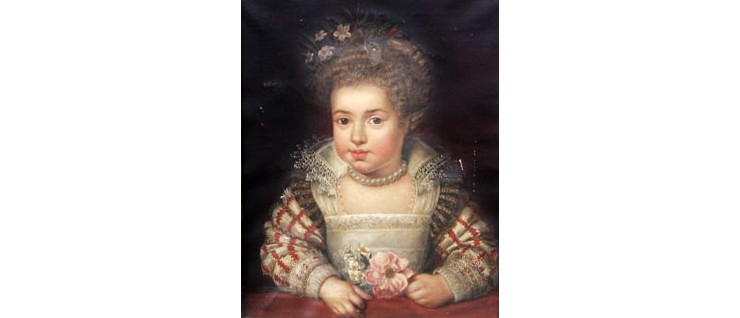
Henrietta Maria as a child, by Frans Porbus the Younger, 1611.
What followed were years of tension, with her family embroiled in a series of vicious power-plays including in 1617 a coup d’état that saw the young king exile his own mother out of Paris. Henrietta, although the youngest daughter of the family, became a vital asset as France looked outward for allies. At 13, serious talks of marriage began.
Initial encounters
Enter a young Charles, then Prince of Wales. In 1623, he and flamboyant favourite the Duke of Buckingham set out incognito on a boys trip abroad to woo the foreign princess. He met Henrietta in France, before moving swiftly on to Spain.
It was the Spanish Infanta, Maria Anna, who was the target of this secret mission. She was however highly unimpressed by the prince’s antics when he showed up unannounced, and refused to see him. Unfazed by this, on one occasion Charles literally jumped a wall into the garden where Maria Anna was walking in order to speak with her. She duly responded in screams, and fled the scene.
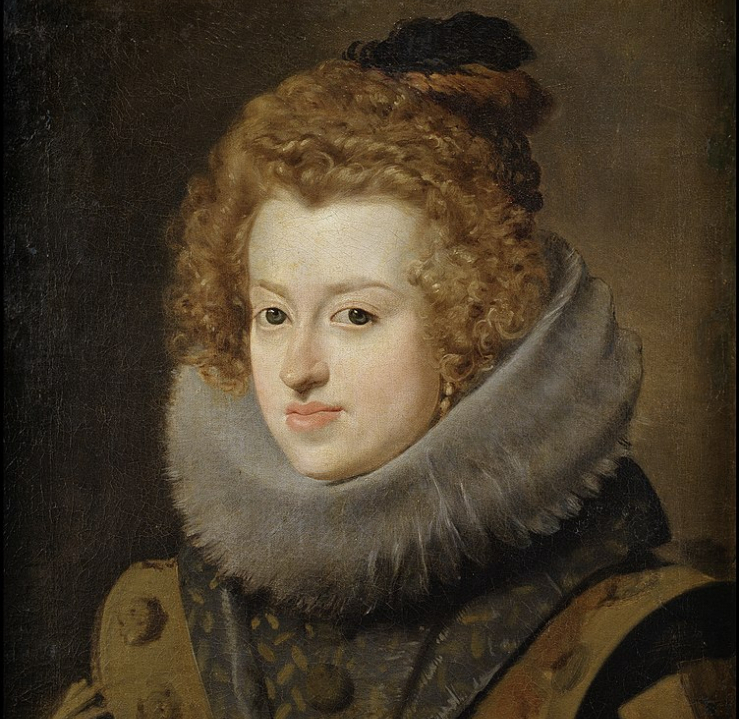
Maria Anna of Spain whom Charles had first planned to wed, by Diego Velazquez, 1640.
The Spanish trip may not have been entirely in vain however. One evening the Queen of Spain, Elizabeth de Bourbon, pulled the young prince aside. The two spoke in her native language of French, and she expressed her desire to see him wed her beloved youngest sister, one Henrietta Maria.
‘Love pours out lilies mixed with roses’
With the Spanish Match now soured, (so much so that England were gearing for war with Spain), James I turned his attention to France, and marriage negotiations for his son Charles moved quickly.
The teenage Henrietta was full of romantic notions when Charles’ ambassador arrived. She requested a miniature portrait of the prince, and opened it with such anticipation that she could not put it down for an hour. Coins commemorating their marriage would state ‘Love pours out lilies mixed with roses’, combining the two emblems of France and England.
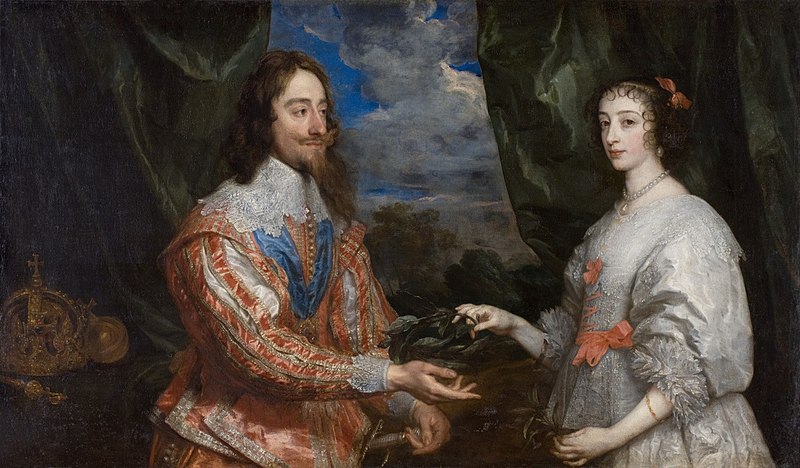
Charles I and Henrietta Maria by Anthony van Dyck, 1632.
Lighthearted visions of love soon became more serious however. A month before the wedding, James I suddenly died and Charles ascended the throne aged 24. Henrietta would be thrust into queenship upon her immediate arrival into England.
At a mere 15 herself, she made the intimidating journey across the channel, barely able to speak the language. Henrietta was more than up to the challenge however, as a courtier noted her confidence and wit, asserting with glee that she was certainly ‘not afraid of her shadow’.
Staunch Catholic
Charged with simultaneously promoting Catholicism in England and assimilating herself with a Protestant English court, Henrietta was dealt a difficult hand from the outset. Anti-Catholic sentiment was still rife from Mary I’s bloody reign, thus when her vast entourage of 400 Catholics, including 28 priests, arrived in Dover, many saw it as a papal invasion.
She was unwilling to compromise on what she believed to be the ‘true religion’ however, much to the English court’s dismay.
A Catholic coronation was out of the question, and so she refused to be crowned. She did not refer to herself as ‘Queen Mary’ as had been decided for her, and continued to sign her letters ‘Henriette R.’ When the king tried to dismiss her French entourage, she climbed out of her chamber window and threatened to jump. Perhaps this girl would be something of a problem.
This was not mere stubbornness however. Her marriage contract had promised Catholic tolerance, and it had not delivered. She felt it was her right to honour her upbringing, her true faith, and her conscience at her new court, not to mention the wishes of the Pope himself who had assigned her the ‘saviour’ of the English people. No pressure.
‘Eternally thine’
Despite their rocky beginnings, Henrietta and Charles would come to love one another deeply. Charles addressed each letter ‘Dear Heart’, and signed off ‘eternally thine’, and the pair went on to have seven children together. In behaviour highly uncommon for royal parents, they were an extremely close family, insisting on eating meals together and recording the children’s ever-changing heights on an oaken staff.
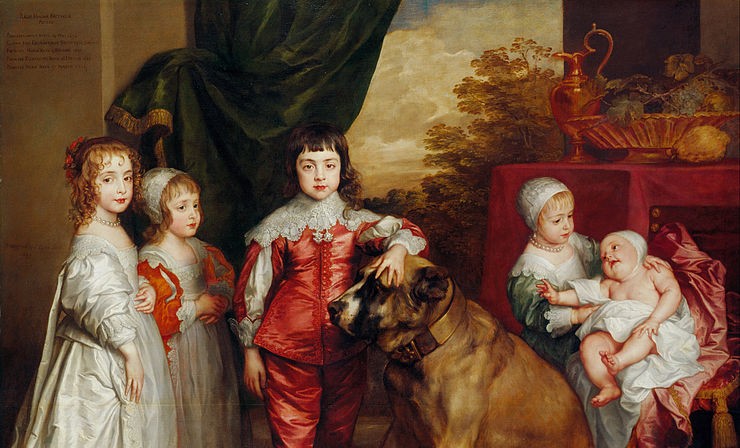
Five of Henrietta Maria and Charles I’s children. The future Charles II stands centre. Based on an original by Anthony Van Dyck c.1637.
The rulers’ close relationship paved the way for Henrietta to aid the king in the processes of the civil war as he grew confident and even dependent on her counsel, speaking of ‘her love that maintains my life, her kindness that upholds my courage.’
This adds a deeply personal dimension to her efforts on his behalf – she was not only defending her king, but also her beloved. Parliament would however use this deep affection in attempts to emasculate Charles and vilify Henrietta, disseminating anti-Royalist propaganda throughout the country. Having intercepted some of their letters, one parliamentary journalist mocked of the queen, ‘This is the Dear Heart which hath lost him almost three kingdoms’.
Civil War
‘By land and sea I have been in some danger, but God has preserved me’ – Henrietta Maria in a letter to Charles I, 1643.
Civil war broke out in August 1642 after years of mounting tensions between the king and Parliament. A fierce believer in divine right, Henrietta instructed Charles that to accept Parliament’s demands would be his undoing.
She worked tirelessly for the Royalist cause, travelling Europe to raise funds, pawning off her crown jewels in the process. When in England, she met key supporters to discuss strategy and distribute arms, playfully styling herself ‘Generalissima’, and often finding herself in the line of fire. Unafraid of her own shadow at 15, she maintained her nerve in the face of war at 33.
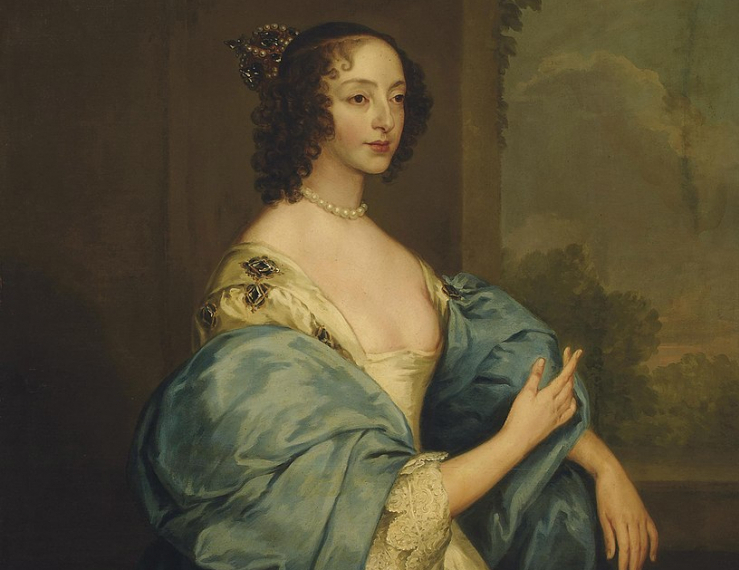
Henrietta Maria 3 years before the war began, by Anthony van Dyck, c.1639.
Again, Parliament seized upon Henrietta’s resolve to directly involve herself in the conflict, and scapegoated her for her husband’s weak government and poor ability to rule. They stressed her abnormality in flouting the roles of her gender and vilified her reorganisation of patriarchal authority, yet her determination did not falter.
When exiled in 1644 as the war worsened, she and Charles kept up constant communication, clinging to an ideology that would be their downfall in a world on the brink of constitutional change. The king implored her that if ‘the worst should come’, she must ensure their son received his ‘just inheritances’.
Following Charles’ execution in 1649, a heartbroken Henrietta worked to heed these words, and in 1660 their son was reinstated to the throne. He is now known as the fun-loving ‘king who brought back partying’, Charles II.
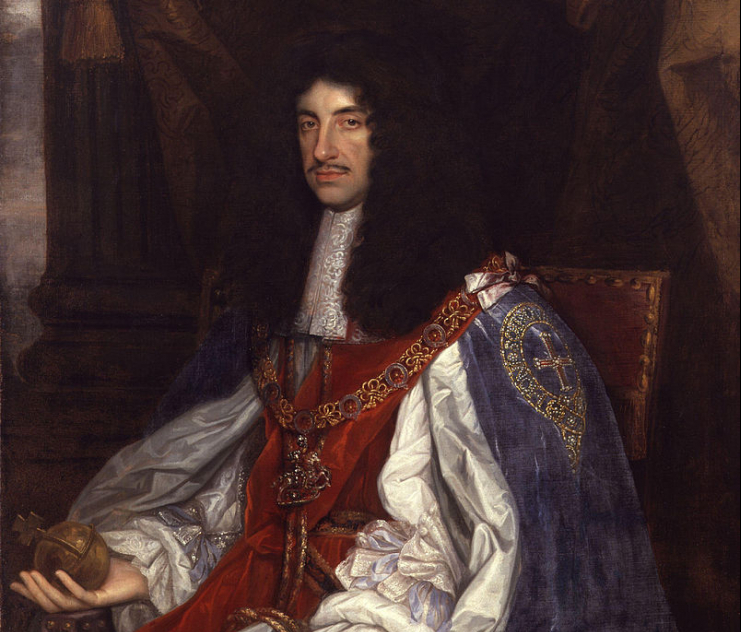
Charles II, by John Michael Wright c.1660-65.
















